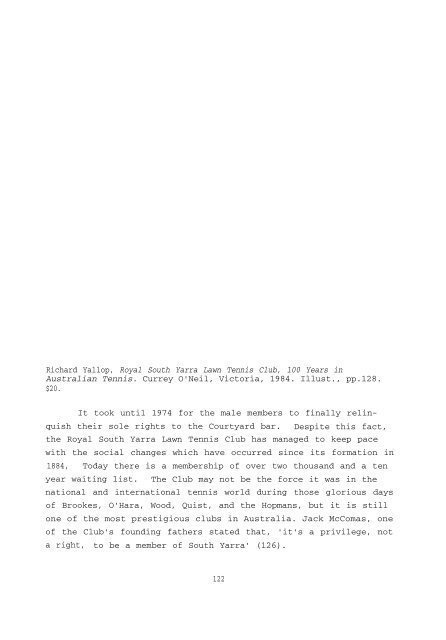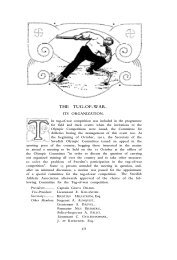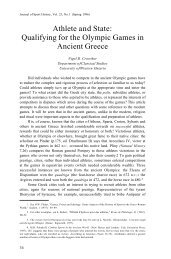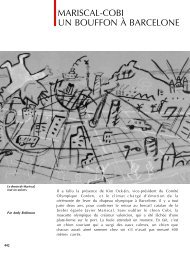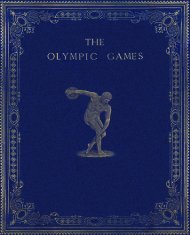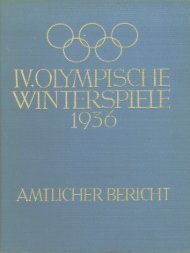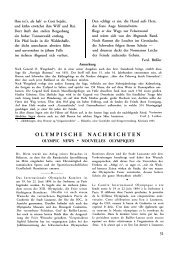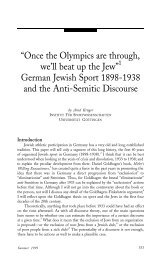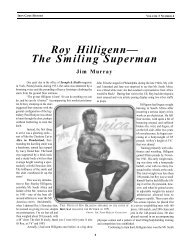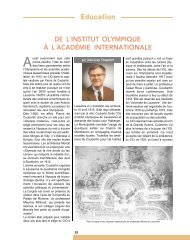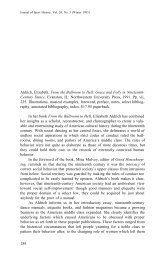Richard Yallop, Royal South Yarra Lawn Tennis Club
Richard Yallop, Royal South Yarra Lawn Tennis Club
Richard Yallop, Royal South Yarra Lawn Tennis Club
Create successful ePaper yourself
Turn your PDF publications into a flip-book with our unique Google optimized e-Paper software.
<strong>Richard</strong> <strong>Yallop</strong>, <strong>Royal</strong> <strong>South</strong> <strong>Yarra</strong> <strong>Lawn</strong> <strong>Tennis</strong> <strong>Club</strong>, 100 Years inAustralian <strong>Tennis</strong>. Currey O'Neil, Victoria, 1984. Illust., pp.128.$20.It took until 1974 for the male members to finally relinquishtheir sole rights to the Courtyard bar. Despite this fact,the <strong>Royal</strong> <strong>South</strong> <strong>Yarra</strong> <strong>Lawn</strong> <strong>Tennis</strong> <strong>Club</strong> has managed to keep pacewith the social changes which have occurred since its formation in1884, Today there is a membership of over two thousand and a tenyear waiting list.The <strong>Club</strong> may not be the force it was in thenational and international tennis world during those glorious daysof Brookes, O'Hara, Wood, Quist, and the Hopmans, but it is stillone of the most prestigious clubs in Australia. Jack McComas, oneof the <strong>Club</strong>'s founding fathers stated that, 'it's a privilege, nota right, to be a member of <strong>South</strong> <strong>Yarra</strong>' (126).122
<strong>Richard</strong> <strong>Yallop</strong> has produced a book which not only gives acomprehensive history of the <strong>Club</strong>,but also provides valuable insightsinto the development of tennis in Australia.The <strong>Club</strong>'smost famous son, Norman Brookes, was the first Australian to win asingles title at Wimbledon. He also played a significant role inbringing the Davis Cup to Australasia for the first time in 1907.Brookes, who was knighted for his services to the game of tennis,was President of the <strong>Lawn</strong> <strong>Tennis</strong> Association of Australia from 1926to 1955. Two other <strong>South</strong> <strong>Yarra</strong> men have also held that position;D.M. Ferguson from 1955-60 and Wayne Reid who steered the Associationsafely through the dramatic changes which took place whentennis went 'Open' in the late 1960s.There are also glimpses into the days of the tennis legendssuch as Suzanne Lenglen and Bill Tilden, when tennis was the sportof the wealthy, and reminders of the tremendous influence NellHopman had on women's tennis in Australia, lifting it from a socialget-together to world heights. <strong>South</strong> <strong>Yarra</strong> produced some of theleading women national players, including six-time Victorian and1910 national champion, Lily Addison. These successes, however,were largely unnoticed by the press who seemed to think that thegreatest achievement of <strong>South</strong> <strong>Yarra</strong>'s ladies was the quality oftheir afternoon teas.The book is lavishly illustrated but the lack of an index isa disappointment. This is partly compensated by the appendix whichincludes significant tennis achievements by players during theirperiod of membership. It reads like a Who's Who of Australiantennis - Frank Sedgman, Don Candy, Neale Fraser, Margaret Court(nee Smith), Judy Dalton (nee Tegart), Paul McNamee and manyothers have played for this unique <strong>Club</strong> during its first one hundredyears.Diana HarteMemorial Drive <strong>Tennis</strong> <strong>Club</strong>Adelaide123


